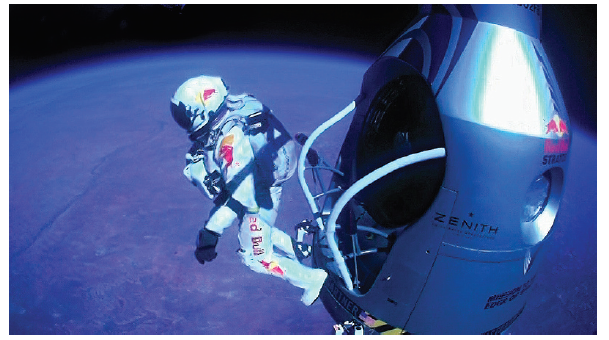1. What is the critical-thinking issue raised by the case? 2. Summarize the different types of marketing...
Question:
2. Summarize the different types of marketing communications that Red Bull uses. Are these €œtraditional€ or €œnontraditional€?
3. What communication goal does each of Red Bull€™s marketing communication tools accomplish? Are you familiar with any additional brand touch points that are not mentioned in the case?
4. What is the risk of sponsoring a special event such as Felix Baumgartner€™s historic skydive?
5. What makes Red Bull, in Professor Kumar€™s words, an €œantibrand brand€?
It is a safe bet that most people reading this textbook are familiar with Red Bull. The $6.4 billion company that virtually created the market for energy drinks revels in its association with cultural events such as concerts and extreme sports including snowboarding and surfing. The company uses a variety of communication channels in addition to advertising and PR to promote the brand. Red Bull€™s Facebook page has 43 million €œlikes,€ and 2 million people follow its Twitter feed. At concerts and other events, street teams pass out free samples while driving specially modified cars with giant Red Bull cans mounted on them. Also, the company sponsors the Infiniti Red Bull Formula One racing team. In addition, the Red Bull Arena in Harrison, New Jersey, is home to the New York Red Bulls Major League Soccer team. In sum, Red Bull is not only high energy; it is high profile, too!
The brand€™s slogan, €œRed Bull Gives You Wings,€ made Red Bull the perfect corporate partner for one of the biggest PR coups in recent years. In fall 2012, Red Bull sponsored Felix Baumgartner€™s deathdefying skydive from the edge of space (see Exhibit 14-14). After seven years of planning, Baumgartner jumped from a helium-filled balloon at an altitude of 24 miles. As a worldwide audience watched on television and YouTube, Baumgartner plummeted toward earth at speeds as high as Mach 1.24 (834 miles per hour) before landing safely. Needless to say, the Red Bull logo was prominently displayed on his uniform, and the event received extensive publicity in the press.
The success of the Red Bull Stratos project helps the Red Bull brand stand out from a crowded field of competitors that include Monster and Rockstar. As brand strategist Roger Addis noted, €œIt€™s a smart move because it€™s such a singular event. If the logo is buried in a sea of logos on a NASCAR car, you€™re completely diluted by all the others.€ The ad industry seems to agree; Red Bull topped Advertising Age magazine€™s 2012 Best of Creativity rankings in the integrated/interactive category.
Dietrich Mateschitz, Red Bull€™s creator, trusted his entrepreneurial instincts instead of relying on traditional marketing research. As Mateschitz recalls, €œWhen we first started, we said that there is not an existing market for Red Bull, but Red Bull will create it. And this is what finally became true.€ In other words, Mateschitz succeeded at accomplishing one of the most basic goals in marketing: He discovered a market segment with needs that were not being met by any existing product. Today, Red Bull€™s blue-and-silver cans emblazoned with the iconic charging bulls logo are recognized around the globe. Mateschitz€™s marketing instincts have made him a wealthy man; in 2005, for example, he was featured in Forbes magazine€™s cover story on billionaires.
With typical entrepreneurial flair, Mateschitz pursues alternatives to orthodox advertising strategies and tactics. €œWe were always looking for a different, more creative point of view,€ he says. For example, Red Bull utilizes a communication tool known as marketer-produced media. The Red Bulletin is a monthly magazine produced by Red Bull Media House. Red Bull distributes more than 3 million copies of each issue through newsstand sales, subscriptions, and as a free iPad app. The magazine is available in Austria, Germany, Great Britain, Kuwait, New Zealand, Poland, and South Africa. In 2011, The Red Bulletin was launched in the United States; 1.2 million free copies were distributed in major newspapers such as The Los Angeles Times, The Chicago Tribune, and The New York Daily News. The first U.S. issue featured San Francisco Giants pitcher Tim Lincecum, one of hundreds of athletes who are sponsored by Red Bull. As publisher Raymond Roker put it, €œWe are entering a new age of media in terms of what consumers of content want and expect.€
Exhibit 14-14

Step by Step Answer:






